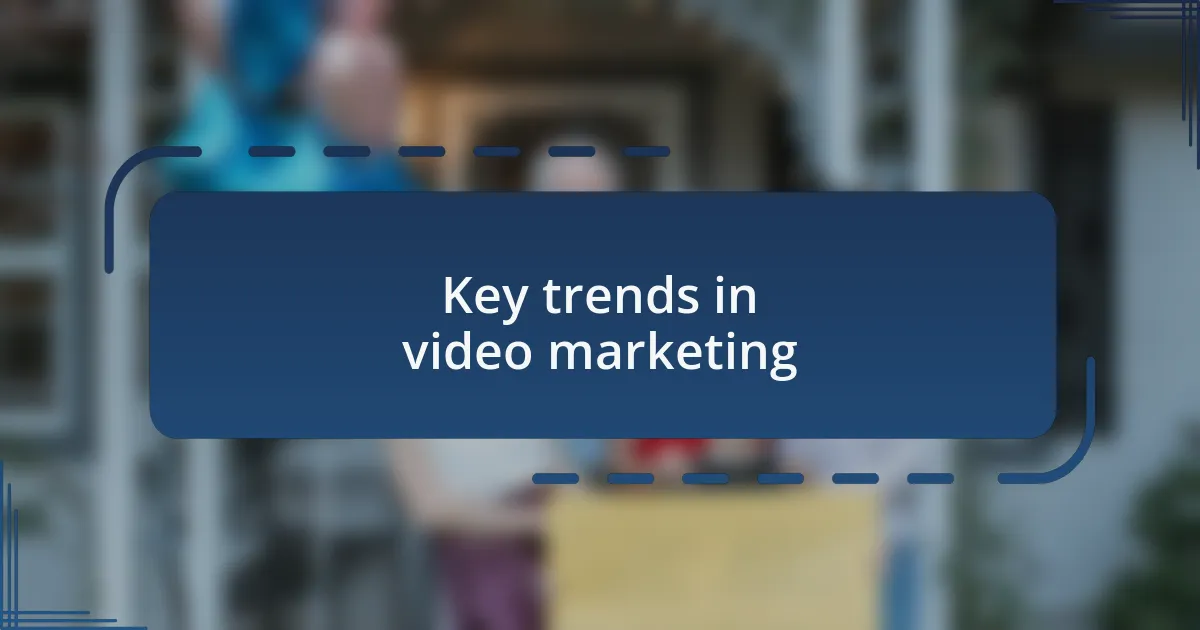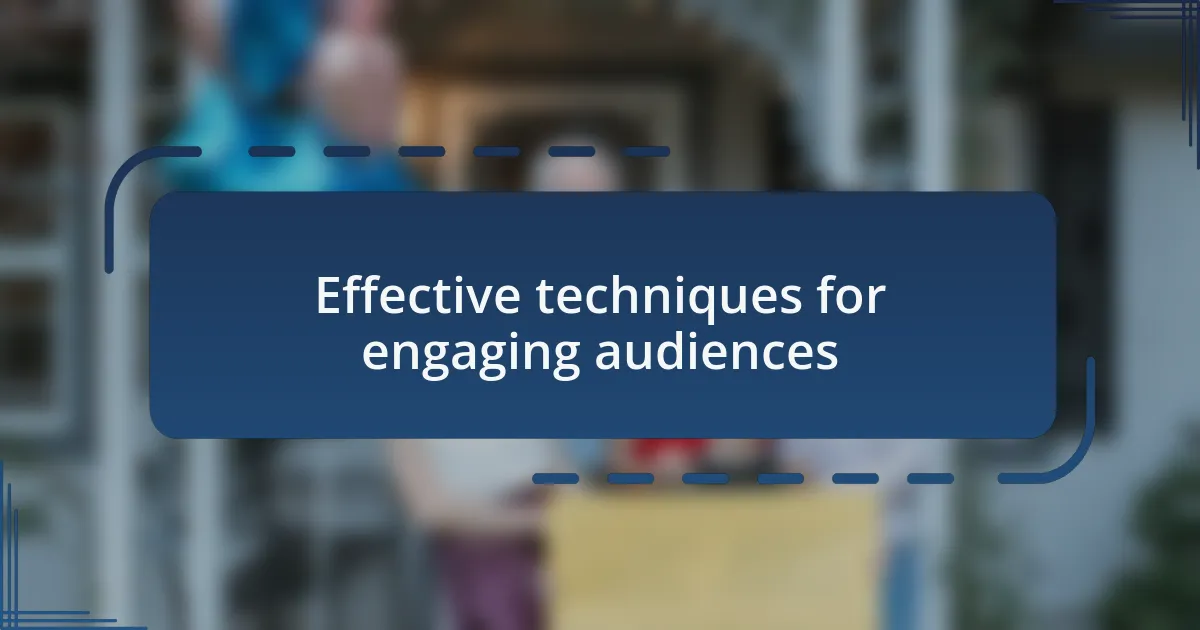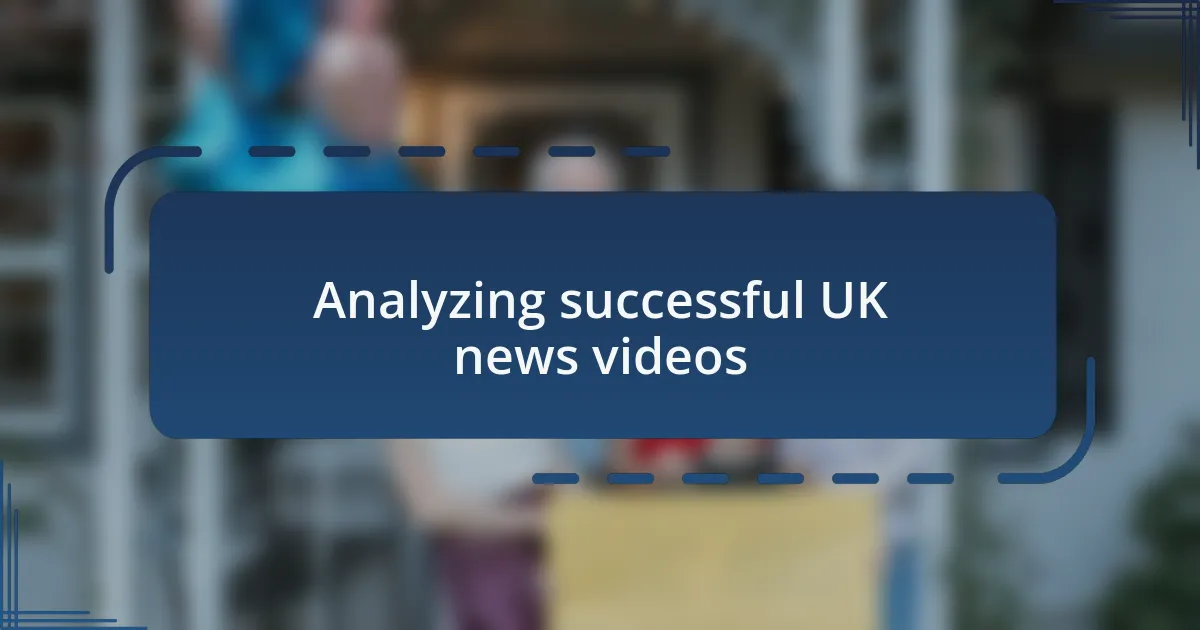Key takeaways:
- Video marketing is trending towards shorter formats and live content to enhance engagement and authenticity.
- User-generated content (UGC) and shoppable videos are gaining popularity, fostering community trust and driving conversions.
- Effective storytelling, interactive elements, and strong calls-to-action are crucial techniques for engaging audiences in video marketing.
- Successful news videos leverage real-time events, local perspectives, and compelling visuals to create relatable and digestible content.

Understanding video marketing trends
Video marketing trends are evolving rapidly, and understanding them is crucial for any brand aiming to connect with its audience. I remember when I first realized the power of video; a simple video I created for a small local business brought them tremendous engagement. It made me think—how can such a dynamic format resonate so deeply?
One significant trend I’ve noticed is the shift toward shorter, more impactful videos. Platforms like TikTok and Instagram Reels have taken the spotlight, emphasizing the importance of grabbing attention quickly. Have you ever found yourself scrolling endlessly through short clips? That instant engagement highlights why brevity in video content is so powerful—it’s all about delivering a message in seconds.
Additionally, live video content is gaining traction as audiences crave authenticity. I personally find live streams more engaging than pre-recorded ones; they feel more genuine and relatable. This desire for real-time interaction raises an interesting question: how often are we willing to engage with brands that offer a transparent glimpse into their personality? It’s clear that the more authentic a brand appears, the more likely viewers are to trust them.

Key trends in video marketing
One key trend in video marketing is the explosive growth of user-generated content (UGC). I once collaborated with a brand that encouraged their customers to share their experiences through video testimonials, and the response was overwhelming. This grassroots approach not only fostered a sense of community but also built genuine trust—wouldn’t you agree that seeing real people share their stories can be far more compelling than traditional advertising?
Another notable shift is the rise of shoppable videos. When I came across a brand that integrated shopping directly into their video content, it clicked for me; the ease of purchasing while engaging with a product in action is revolutionary. It begs the question: how much more likely are we to buy something that we can see in use, rather than just read about? This seamless experience can significantly drive conversion rates and enhance the customer journey.
Finally, the trend of incorporating accessibility features, like subtitles and audio descriptions, cannot be overlooked. I remember testing a marketing campaign that included these elements, and the positive feedback was immediate. Not only does it broaden the audience base, but it also shows a brand’s commitment to inclusivity—what could be more appealing than knowing a brand truly cares about reaching all viewers?

Effective techniques for engaging audiences
When I think about the impact of storytelling in video marketing, it’s hard to overlook its effectiveness in capturing attention. I once watched a video campaign that narrated a personal journey, connecting emotionally with audiences. It made me realize that when brands share authentic stories, they don’t just sell a product; they invite viewers into their world, creating a deeper connection. Isn’t it fascinating how a well-told story can linger in your mind long after the video ends?
Another technique I find incredibly powerful is the use of interactive elements in videos. I’ve come across videos where viewers can click to choose different paths or decisions, engaging them in a unique way. This not only keeps their attention but also encourages them to share their experiences—making the video a part of their narrative. Does the idea of being an active participant in a brand’s story resonate with you as much as it does with me?
Lastly, having a strong call-to-action (CTA) at the end of videos can significantly influence audience engagement. I recall a time when I encountered a beautifully crafted video that ended with a clear invitation to learn more or participate. I felt compelled to act immediately, and that’s the kind of momentum brands should strive for. How often have you felt that urge to engage further after a compelling video? It’s a vital part of shaping the viewer’s journey.

Analyzing successful UK news videos
When analyzing successful UK news videos, I often think about how they leverage real-time events to captivate their audiences. For instance, during a notable election, I remember a gripping series of reports that not only covered the facts but also portrayed the human side of the candidates. By focusing on the personal stories behind the political personas, they allowed viewers to connect beyond the headlines, creating a more impactful viewing experience. Doesn’t it make a difference when news feels relatable and not just like data on a screen?
Another aspect that stands out to me is the incorporation of local perspectives in news videos. I once watched a heartwarming feature about a small community rallying together to support a local initiative. It left me with a sense of pride and connection to my community, as the video highlighted voices that often go unheard. Isn’t it remarkable how spotlighting local stories can make national news feel more intimate and engaging? It draws people in by reminding them of the power of shared experiences.
Additionally, the use of visuals and graphics in UK news videos can’t be understated. There’s a specific report on environmental changes that merged stunning footage with statistical overlays, making the information digestible and compelling. I found myself not just watching but actually absorbing the content, which made me rethink my own habits. How often do you find a visual representation of news elevates your understanding? It reinforces the idea that a well-crafted video can transform complex issues into easily understandable narratives.